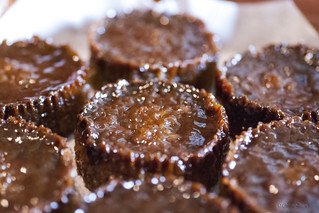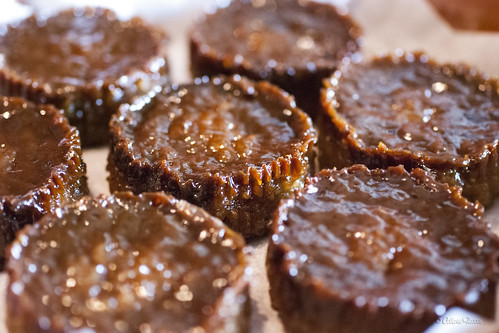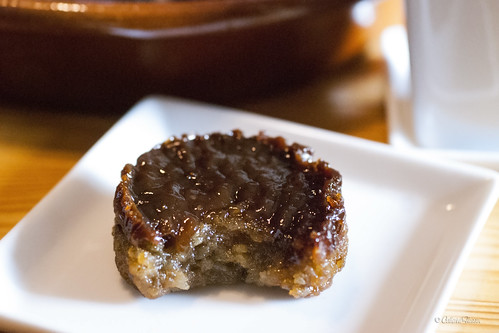Bibingkang malagkit II
Another, more complicated version of how to make one of my favorite Filipino kakanin, the bibingkang malagkit. This version uses both coconut cream and coconut milk—the former being used to make the topping, while the latter is used in making the glutinous rice base (biko). The coconut cream, which is a lot thicker in consistency than coconut milk, makes the topping thicker and creamier in consistency than when only coconut milk is used.
Bibingkang malagkit is usually baked in single round, square, or rectangular pans lined with greased banana leaves, then cut into serving size squares after they have cooled… However, in an attempt to save time and omit the cutting process, I baked it here using pans for standard-sized muffins 😅 And since banana leaves are hard to come by here, I also used cupcake liners to line the pans. If you are going to follow suit, I suggest you grease the bottom AND the sides of your cupcake liners as the topping tends to stick once cooled. (Unless of course, you are either prepared to spend a considerable amount of time trying to peel them off of each cake, or you enjoy seeing the guests you are serving them to struggle to peel them off 😇)
Lastly, bibingkang malagkit is best enjoyed with a cup of coffee or tea ☕😊👍
____________________
Bibingkang malagkit
Biko (bibingka base)
Makes about 8 servings
500 g (2 cups) glutinous, a.k.a. malagkit, rice
400 ml coconut milk
100 ml water
3 pcs. pandan leaves or about 1/4 tsp pandan essence (optional)
1 cup brown sugar, lightly packed
1/4 teaspoon salt
- Wash and drain the rice.
- Line your baking pan with banana leaves or baking paper. Grease the surface of the banana leaves (or baking paper) with butter or neutral oil. (Note: If using pans for standard-sized muffins, line these with standard-sized cupcake liners, AND grease the sides and bottom of each cupcake liner to prevent the bibingka from sticking.)
- In a large non-stick pan/pot, combine the coconut milk, water, and pandan leaves. Heat over medium heat and let simmer for 5 minutes before removing the pandan leaves. (If using only the essence, skip this step; just let mixture come to a simmer then proceed to next step.)
- Add the rice and cook, stirring occasionally, for about 15-20 minutes or until the rice grains are cooked through (soft) and most of the liquids had been absorbed.
- Add the sugar and salt, and stir until thoroughly combined. Continue cooking for another 10-20 minutes, stirring regularly, until the mixture becomes very thick.
- Transfer the cooked rice mixture into the prepared baking dish. Spread evenly (flatten).
- Spoon and evenly spread the coconut cream topping (recipe below) over the rice mixture.
- Bake in a 175°C preheated oven for 15-25 minutes or until the topping starts to firm up. Increase the temperature to 180-190°C and bake/grill the bibingka for another 10-20 minutes, or until the topping has reached the desired dark golden brown color.
Coconut cream topping
375 ml coconut cream
1 cup brown sugar, lightly packed
- Combine the coconut cream and sugar in a non-stick sauce pan. Cook over low heat, stirring occasionally, until the mixture has reduced to half its original volume, or the mixture has thickened but still spreadable.




Comments